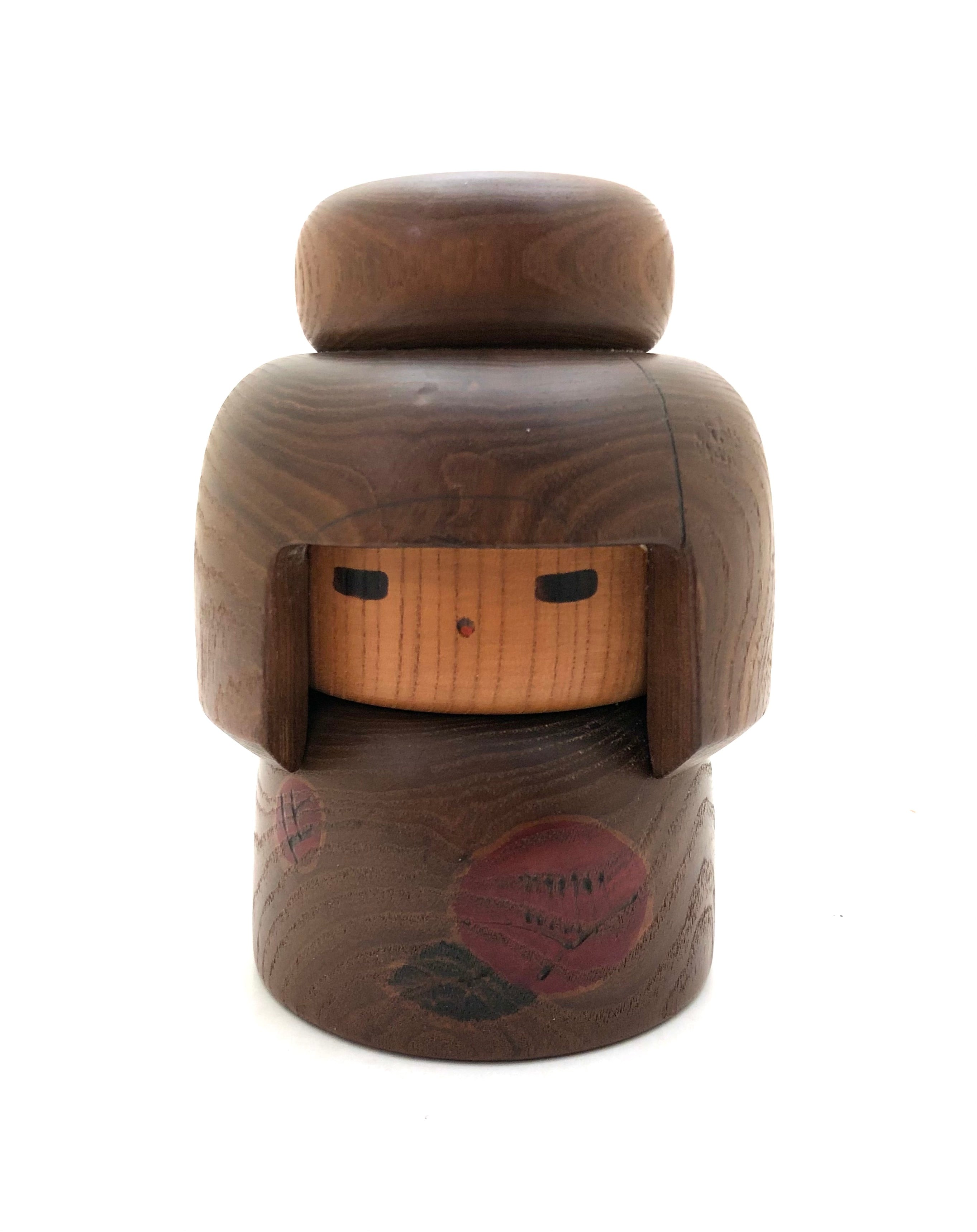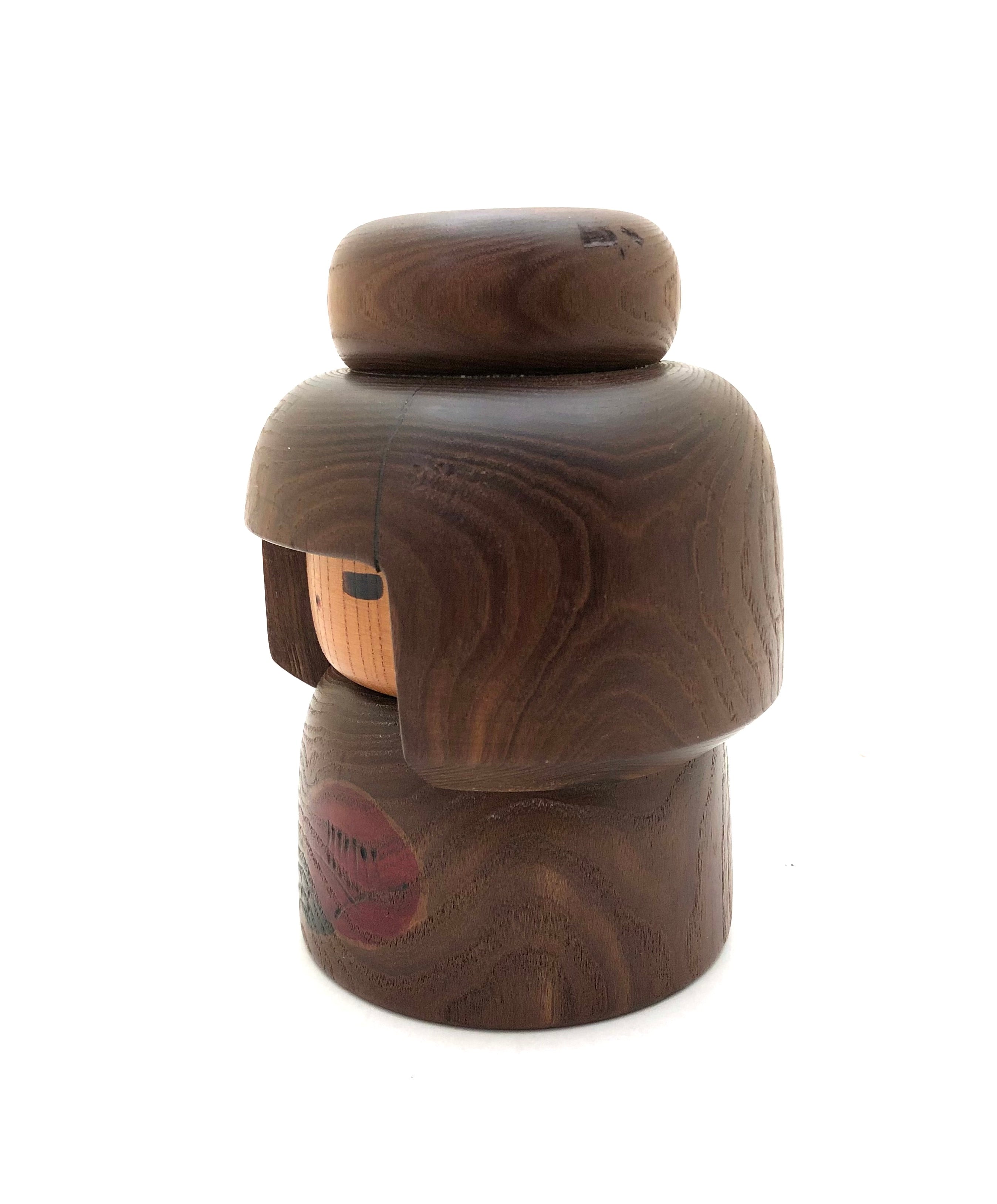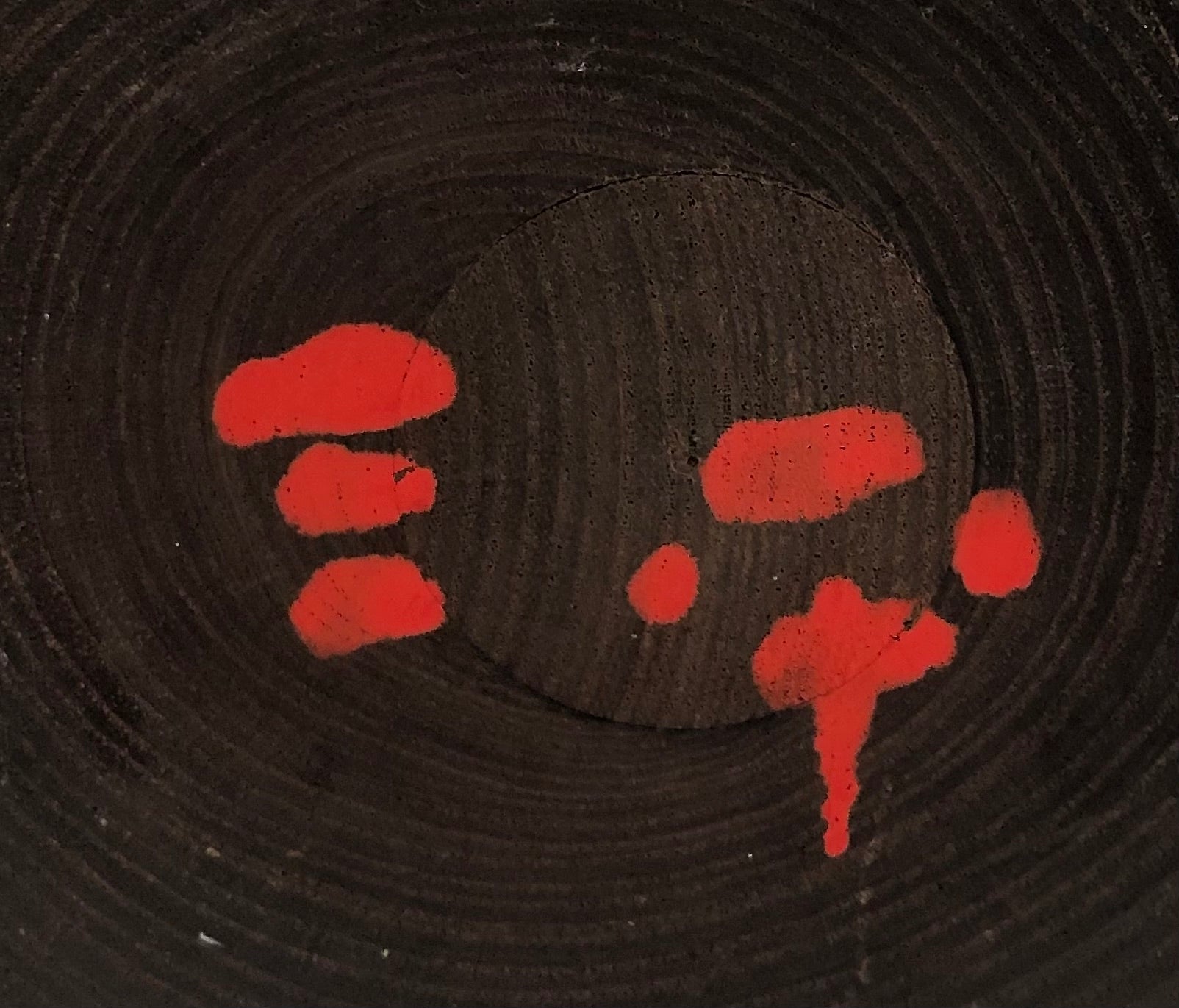


Vintage Sosaku Kokeshi entitled: “Tsubaki ko | Camellia Girl” by Yamanaka, Sanpei
Dimensions: 6-0”h x 4-1/2” dia
The technical aspect of a doll made of one piece of wood is successfully evident by the beautiful forming of the figure. The motif, is, of course, the Camellia, (Tsubaki), and the faces and red noses carry the feeling of impishness. The doll has a large ‘Mage’ style hair treatment with carved lines on both sides of the hair to give it depth. A red signature is on the bottom which identifies the artist as Sanpei.
Condition: Excellent meaning that the piece retains its original craft/workmanship showing a wonderful-developed patina commensurate which suggests a degree of wear and hairline crack that was repaired when it was made and corresponds to vintage Folk Craft. It meets all the standards of the collectible Sosaku Kokeshi.

Artisan
Woodworker: Yamanaka, Sanpei
1926-
Biographical History:
Born in Yonezawa, Yamagata Prefecture. He was originally a faculty member of the Engineering Department of Yamagata University and began his artistic career dabbling in photography. However, rather than develop a career in Traditional Yamagata doll making, Yamanaka-san used his photography background to join the Sosaku Kokeshi movement. Both is Kokeshi and his photographs received multiple awards in 1975. Yamanaka is a member of the Yonezawa Miyuki Association and the Photography Department of Nika Association as well as awards from the Ministry of Education Award, at the all Nippon Modern Kokeshi Exhibition in 1979. He published an exceptional illustrative book on how the environment influenced his Kokeshi motif. The book is only in Japanese and entitled: Village Poetry: Sanpei Yamanaka Photo Poetry Collection, 1988.
Collector's note – descriptive qualities, standard characteristics & ornamentation styles:
Yamanaka-san creates wonderfully painted and decorated dolls in many forms and shapes. He may utilize a palette of soft watercolor rings in the Rokuro-moyo manner, to create a suggestion of a rainbow, because in Buddhism, the rainbow is “the highest state achievable before attaining Nirvana, where individual desire and consciousness are sublimated”. On numerous occasions, Yamanaka adds painted flowers to add to the overall dimension of the garment that it is representing. This is not to say that he does not enjoy the natural qualities of wood. Controlled carving adds textures that are neat, random, and sometimes repetitive, and provides decoration to his dolls. The carving contrasts nicely with the natural grain of the wood. Dolls portray wonderful traditional hairstyles through the use of “chattering’ and controlled carving. His head and facial designs are most expressive, particularly in his portrayal of children.
